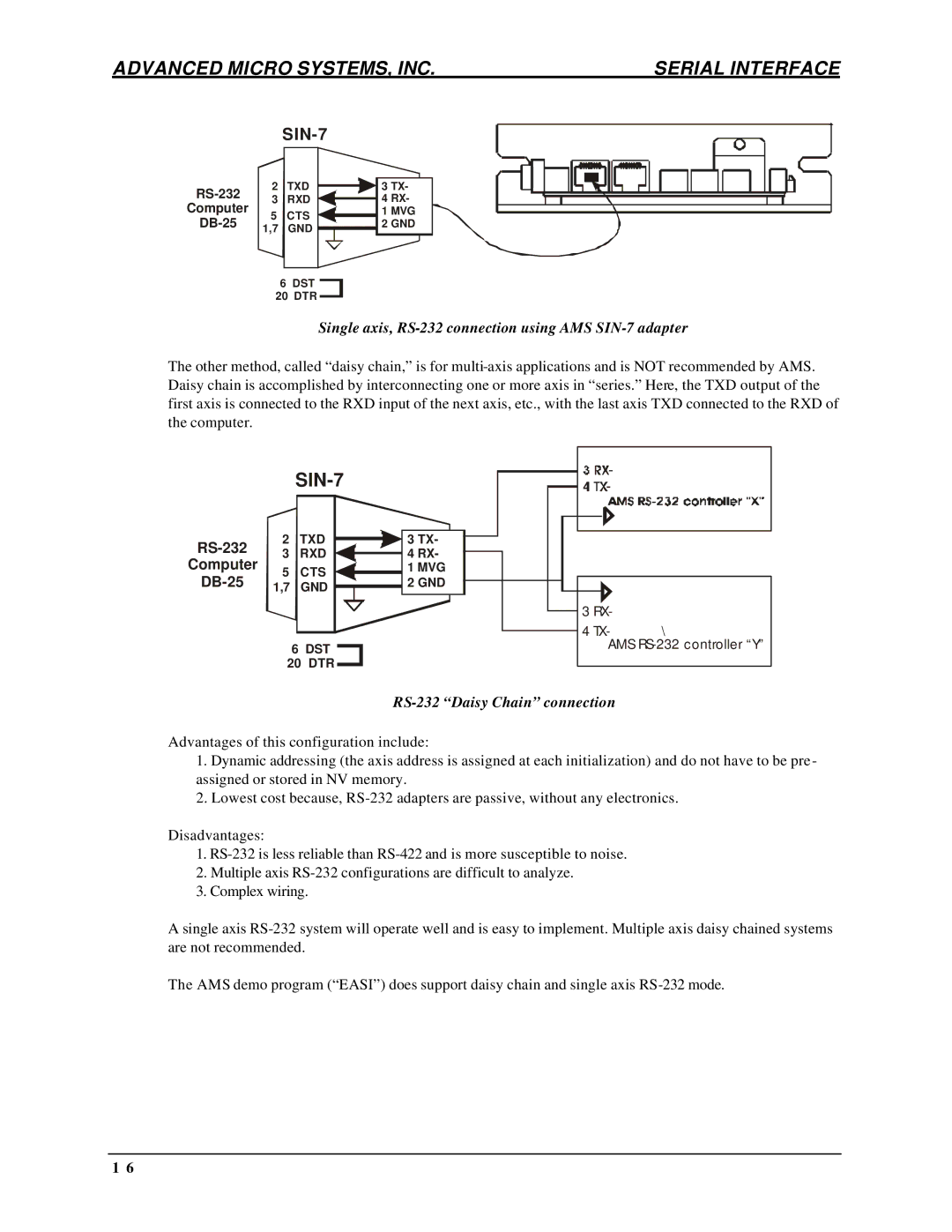
ADVANCED MICRO SYSTEMS, INC. | SERIAL INTERFACE | ||||||
|
|
|
|
|
| ||
2 | TXD |
|
|
| 3 TX- |
| |
|
|
| |||||
3 | RXD |
|
| 4 RX- |
| ||
Computer |
|
|
| ||||
5 | CTS |
|
| 1 MVG |
| ||
|
| 2 GND |
| ||||
1,7 | GND |
|
| ||||
|
|
|
| ||||
6DST
20 DTR
Single axis, RS-232 connection using AMS SIN-7 adapter
The other method, called “daisy chain,” is for
SIN-7
2 | TXD |
|
|
| 3 TX- | |
|
| |||||
3 | RXD |
|
|
| 4 RX- | |
Computer |
|
|
| |||
5 | CTS |
|
|
| 1 MVG | |
|
|
|
| 2 GND | ||
1,7 | GND |
|
|
| ||
|
|
|
|
|
6DST
20 DTR
3RX-
4TX- \
AMS
RS-232 “Daisy Chain” connection
Advantages of this configuration include:
1.Dynamic addressing (the axis address is assigned at each initialization) and do not have to be pre - assigned or stored in NV memory.
2.Lowest cost because,
Disadvantages:
1.
2.Multiple axis
3.Complex wiring.
A single axis
The AMS demo program (“EASI”) does support daisy chain and single axis
1 6
